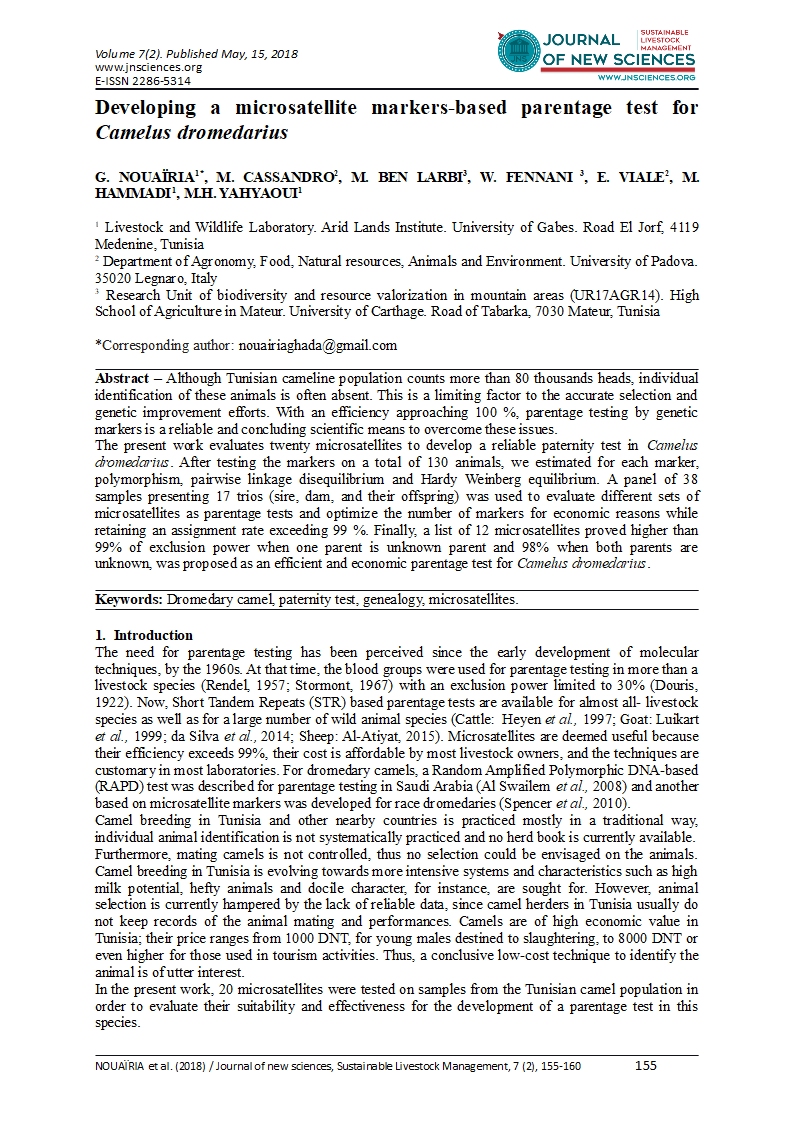- Category: Volume 7
- Hits: 5398
Developing a microsatellite markers-based parentage test for Camelus dromedarius

G. NOUAÏRIA1*
M. CASSANDRO2
M. BEN LARBI3
W. FENNANI 3
E. VIALE2
M. HAMMADI1
M.H. YAHYAOUI1
1 Livestock and Wildlife Laboratory. Arid Lands Institute. University of Gabes. Road El Jorf, 4119 Medenine, Tunisia
2 Department of Agronomy, Food, Natural resources, Animals and Environment. University of Padova. 35020 Legnaro, Italy
3 Research Unit of biodiversity and resource valorization in mountain areas (UR17AGR14). High School of Agriculture in Mateur. University of Carthage. Road of Tabarka, 7030 Mateur, Tunisia
Abstract – Although Tunisian cameline population counts more than 80 thousands heads, individual identification of these animals is often absent. This is a limiting factor to the accurate selection and genetic improvement efforts. With an efficiency approaching 100 %, parentage testing by genetic markers is a reliable and concluding scientific means to overcome these issues. The present work evaluates twenty microsatellites to develop a reliable paternity test in Camelus dromedarius. After testing the markers on a total of 130 animals, we estimated for each marker, polymorphism, pairwise linkage disequilibrium and Hardy Weinberg equilibrium. A panel of 38 samples presenting 17 trios (sire, dam, and their offspring) was used to evaluate different sets of microsatellites as parentage tests and optimize the number of markers for economic reasons while retaining an assignment rate exceeding 99 %. Finally, a list of 12 microsatellites proved higher than 99% of exclusion power when one parent is unknown parent and 98% when both parents are unknown, was proposed as an efficient and economic parentage test for Camelus dromedarius.
Keywords: Dromedary camel, paternity test, genealogy, microsatellites.

